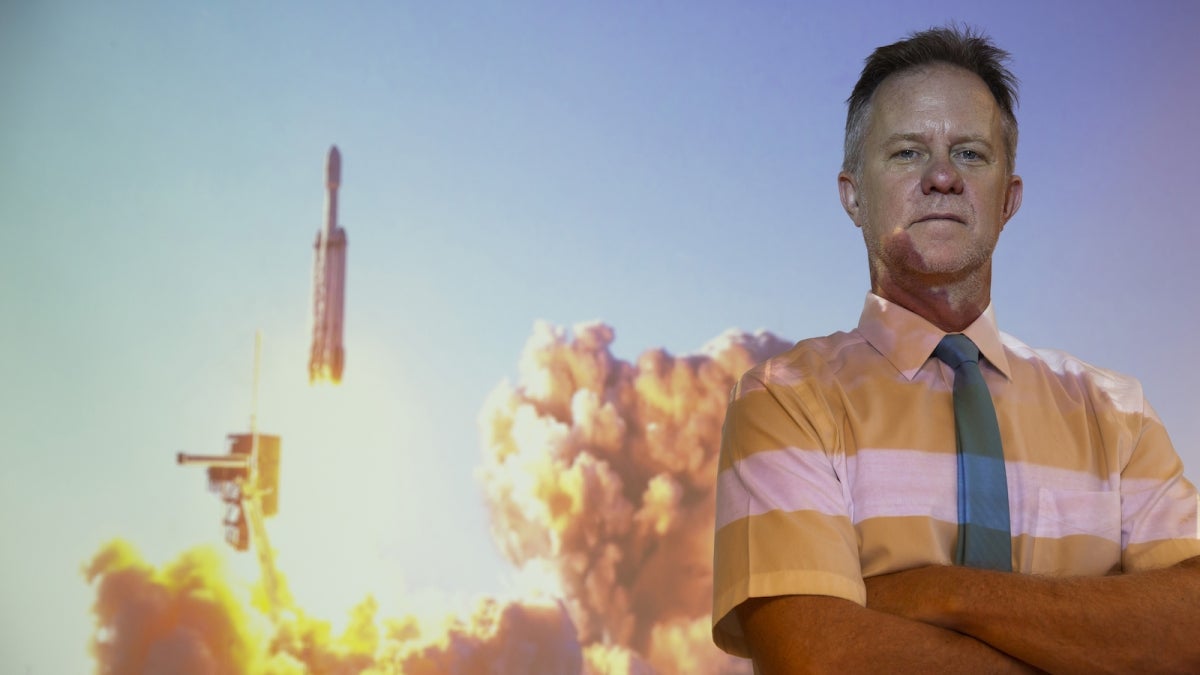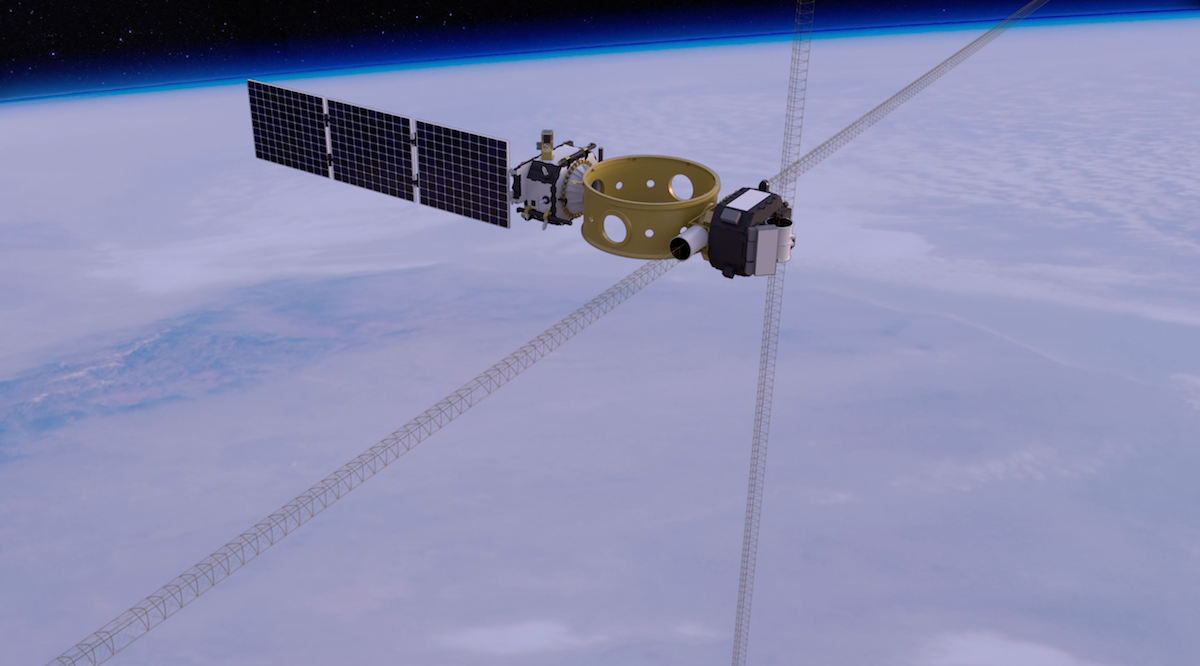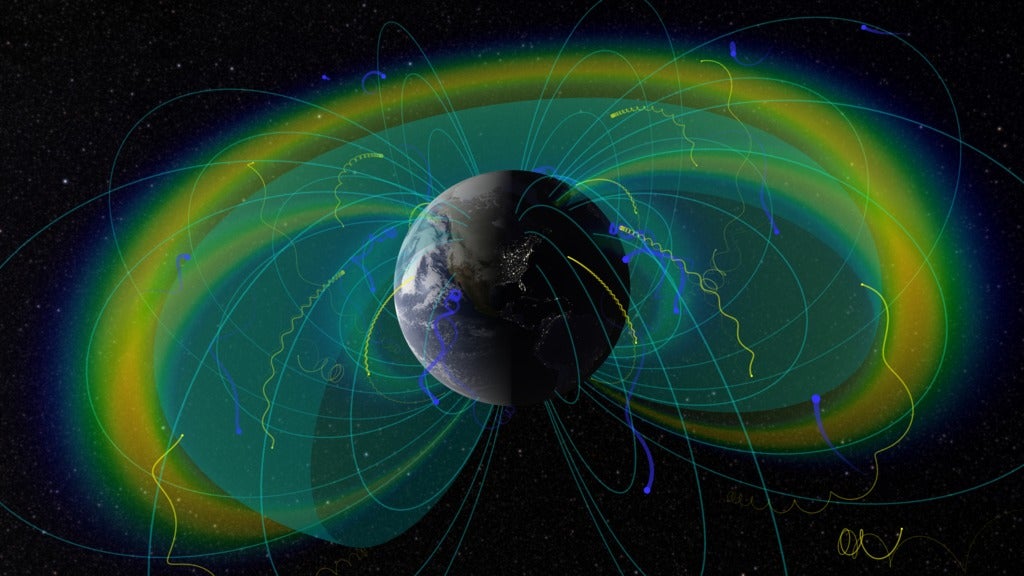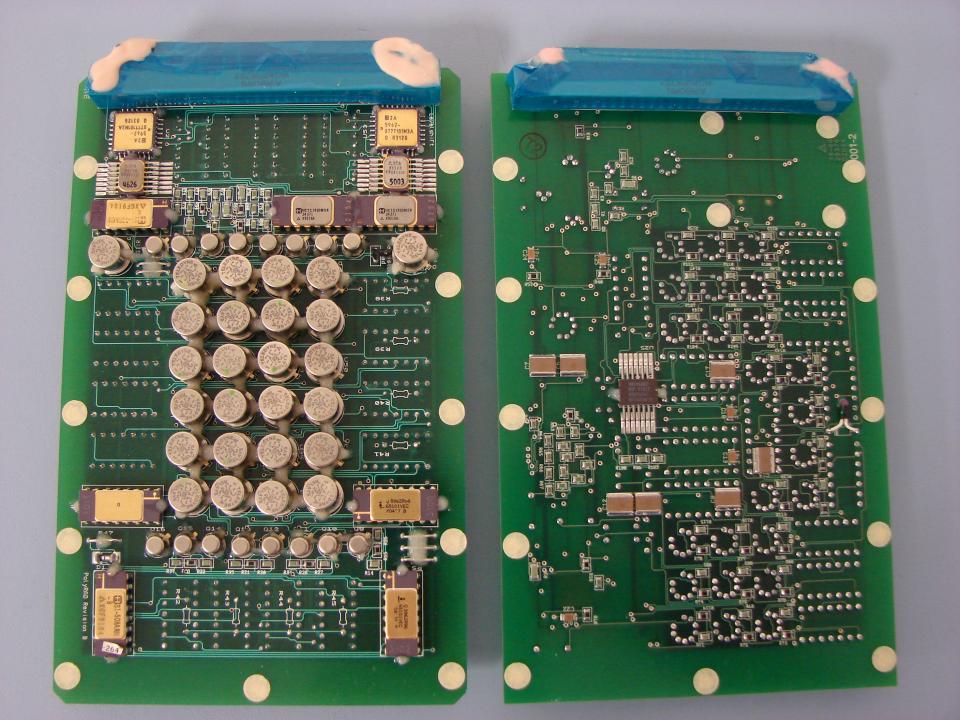ASU engineer's 'rad' little board set to go to space

Arizona State University Professor Hugh Barnaby’s Enhanced Low Dose Rate Sensitivity, or ELDRS experiment, planned to launch aboard the SpaceX Falcon Heavy rocket June 24, will study cumulative total dose damage of radiation and the phenomenon of ELDRS for the first time on bipolar junction transistors, a common component of spacecraft and satellite electronics. Photographer: Erika Gronek/ASU
Dangerous radiation is a fact of life in space.
Astronauts are exposed to 50 to 2,000 milli-Sievert of radiation while in orbit, or the equivalent of 150 to 6,000 chest x-rays — well beyond the recommended lifetime dose. Electronics, though hardier than humans, also suffer from the harmful effects of radiation aboard the spacecraft and satellites that make space exploration possible.
Hugh Barnaby, a professor of electrical engineering in the Ira A. Fulton Schools of Engineering at Arizona State University, has made a career out of developing ways to protect electronics in harsh environments. This month he’ll be launching his second experiment into space to further study radiation’s effects on electronics.
Observing radiation damage at the source
While we can test for radiation’s harmful effects on electronic components on Earth, there’s a catch. Scientists mimic long-term space missions by conducting experiments with comparable radiation sources such as gamma rays over periods of months, but this gets very expensive. Shorter-term tests that save time and money are possible, but a mysterious effect arises.
The Enhanced Low Dose Rate Sensitivity effect, called the ELDRS effect, describes a phenomenon in which a small dose of radiation over a long period of time is more damaging to electronics than a larger dose all at once. Scientists have well-established theories on why this effect occurs, but there is little data from electronics in space to confirm the effect.
As part of NASA’s SET mission, Arizona State University Professor Hugh Barnaby’s ELDRS experiment on the U.S. Air Force’s DSX satellite (pictured) will be aboard the SpaceX Falcon Heavy rocket for its June 24 launch. The mission will help study the effects of space radiation on satellite electronics. Photo courtesy of NASA's Goddard Space Flight Center/CIL
Barnaby’s experimental platform, also called ELDRS, is the first time its namesake effect will be observed on transistors in real time while in space.
Aboard the U.S. Air Force’s Demonstration and Science Experiments (DSX) spacecraft, Barnaby’s ELDRS experiment joins CREDENCE, DIME and COTS-2 radiation effect experiments from researchers at European and U.S. universities that make up the NASA Space Environment Testbeds (SET) mission. The DSX is one of eight satellite instruments that are part of the STP-2 mission planned to launch June 24 on the SpaceX Falcon Heavy rocket using recycled boosters.
Together, the SET experiments will help scientists learn how to protect satellites in radiation-filled outer space, specifically in an area known as the slot region.
Specifically, Barnaby’s ELDRS experiment will examine space radiation’s effect on bipolar junction transistors, a type of transistor still commonly used in space applications.
“There haven’t been too many measurements to tell us how bad things get in the slot region,” said Michael Xapsos, a member of the SET Project Scientist Team at NASA’s Goddard Space Flight Center. “That’s why we’re going there. Before we put satellites there, you have to be aware of how variable the environment is.”
The ELDRS experiment aboard the U.S. Air Force DSX spacecraft will settle into an elliptical orbit about 12,000 miles away from Earth’s surface in what is called the slot region — an area that passes between the two donut-shaped belts of radiation called the Van Allen belts. The belts are filled with trapped high-energy ionized protons and electrons trapped by Earth’s magnetic field. Photo: Shutterstock
A send-off years in the making
More than two decades ago, while working as a researcher at Mission Research Corporation in Albuquerque, New Mexico, Barnaby was part of the design team for a different ELDRS phenomenon test called the Microelectronics and Photonics Test Bed, or MPTB. The experiment was considered a success, sending back actual data collected from space for all circuits tested — all except the transistors, which failed before the research team could get any data.
Barnaby was determined to see the testing through and successfully measure the effects of space radiation on transistors. It was then he began leading his own experimental design to test the ELDRS effect, focusing on the remaining piece of information the MPTB was unable to get.
“There’s a little bit of nervousness, I suppose, because you just never know that it’s going to work,” Barnaby said of the ELDRS experiment. “It’s just a little board that’s going to be shaking and baking.”
Once the DSX spacecraft reaches medium Earth orbit in the slot region, a NASA mission computer will send a signal to the ELDRS circuit board to start the experiment. The instrument will receive a signal two times a day over the six-month mission.
As it goes through the movements of sending current through each of the transistors, the ELDRS circuit board will create two digital outputs — the collector current and the base current — to show the electrical current-voltage characteristics of the transistors. The data gathered will be transmitted back to NASA computers on Earth.
The Enhanced Low Dose Rate Sensitivity or ELDRS experiment’s double-sided printed circuit board, which is about the size of a postcard, studies 24 transistors with different passivation layers on top that vary in material and thickness. Photo courtesy of Hugh Barnaby
Barnaby describes the board as similar to a Rube Goldberg machine with radiation-resistant mechanical switching parts and no onboard computation, a feature he believes was key in NASA choosing this experiment for the SET mission. The circuit board also takes its time, sampling currents at a slow (in computing terms) rate of once per millisecond, which minimizes signal noise.
It’s a simple and “old school” design, Barnaby said, but is optimized to help understand radiation effects for both current and future space-bound electronics.
Over the course of the mission, Barnaby will study the cumulative total dose damage of radiation. In as little as a month, he expects to see the ratio of the two outputs getting smaller and smaller, which means radiation damage is accumulating. In spacecraft electronics, it’s this decreased current ratio that causes devices to fail.
Barnaby expects the transistor’s electrical response to radiation to depend on the modifications to each transistor’s passivation layer. A passivation layer covers the transistors on the test chip to protect the underlying silicon. ELDRS’ 24 transistors include different passivation layers that vary in material and thickness.
The main goal of the experiment is to collect ELDRS effect data from space rather than Earth-based tests. Barnaby's analysis of the data will help scientists confirm what they know about the ELDRS effect as well as design better bipolar junction transistors for future electronics bound for orbit among the Van Allen belts.
Two weeks before the launch, NASA began sending ELDRS test data to Barnaby after pre-launch exercises were conducted to make sure the board is ready for the “churn and burn” of getting into space.
After such a long wait, he can’t wait to finally get ELDRS in orbit.
“I’m super excited,” Barnaby said. “It’ll be amazing to go to Cape Canaveral and actually see it go up.”
More Science and technology

ASU and Deca Technologies selected to lead $100M SHIELD USA project to strengthen U.S. semiconductor packaging capabilities
The National Institute of Standards and Technology — part of the U.S. Department of Commerce — announced today that it plans to…

From food crops to cancer clinics: Lessons in extermination resistance
Just as crop-devouring insects evolve to resist pesticides, cancer cells can increase their lethality by developing resistance to…

ASU professor wins NIH Director’s New Innovator Award for research linking gene function to brain structure
Life experiences alter us in many ways, including how we act and our mental and physical health. What we go through can even…


